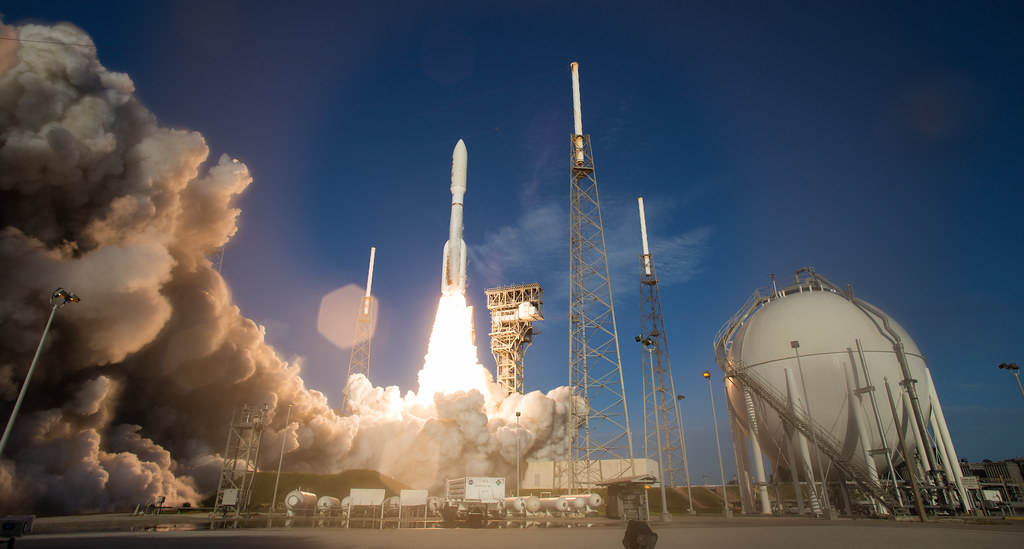India became the fourth nation to land on the moon at 8:34 a.m. Eastern Daylight Time on Aug. 23, affirming India’s ascension as a noteworthy player in the international scientific community as well as a new global vigor in space exploration.
The Indian Space Research Organisation’s Chandrayaan-3 mission achieved one of its three goals, demonstrating a “safe and soft landing” of its lander named “Vikram” on the lunar surface, just days after the Russian Roscosmos’ Luna 25 lunar landing mission failed on Aug. 19.
“The success of Chandrayaan-3 mission is an extraordinary moment in the history of India’s space programme,” Prime Minister Narendra Modi said.
Modi described the landing as “one of the most inspiring moments of the century” and declared Aug. 23 to be officially known as India’s National Space Day.
The lander touched down on the moon’s south pole, marking humanity’s inaugural visit to a region of special interest to scientists around the world — NASA scientists announced in 2009 that The Lunar Crater Observation and Sensing Satellite discovered what could be at least 25 gallons of water in the moon’s southern polar region. In the same year, NASA’s Moon Mineralogy Mapper on the ISRO’s Chandrayaan-1 confirmed the spectral signature of water.
But the signature couldn’t be unambiguously confirmed until NASA attached a 2.7-meter reflecting telescope onto a Boeing 747SP aircraft and dubbed it SOFIA — the Stratospheric Observatory for Infrared Astronomy. SOFIA’s strategic elevation of 38,000 to 45,000 feet allowed it to observe up to 99% of the infrared radiation normally blocked by the atmosphere.
SOFIA, observing craters on the moon’s south pole in infrared, confirmed the presence of water ice. It then was able to detect the presence of water in some sunlit regions of the moon’s surface.
Water on the moon has a host of implications for space exploration.
Ancient water ice could hold a record of lunar volcanoes, potentially informing about the origin of the Earth’s oceans.
NASA’s Artemis mission will land people on the moon’s south pole for the first time, planned for November 2024. The crew, including the first woman and person of color to set foot on the moon, will begin setting up a permanent base on the moon in anticipation of facilitating manned missions to Mars via translunar orbital slingshot.
If in sufficient amounts, the water on the moon can be used as drinking water as well as for producing hydrogen for fuel and oxygen to breathe, supporting missions to Mars or lunar mining.
An indigenous propulsion module carried Chandrayaan-3’s lander module and rover from an injection orbit around Earth up until separation in lunar orbit. It also carried its own payload, an instrument named Spectro-polarimetry of Habitable Planetary Earth, or SHAPE, to study Earth’s spectral and polarimetric measurements from the lunar orbit.
The Vikram lander and Chandrayaan-3’s rover, named “Pragyan,” are equipped with a suite of instruments of their own.
Vikram was loaded with Chandra’s Surface Thermophysical Experiment, or ChaSTE, to measure the thermal conductivity and temperature on the moon and the Instrument for Lunar Seismic Activity, or ILSA, for measuring the seismicity around the landing site as well as a passive Laser Retroreflector Array from NASA to collect data for lunar laser ranging studies.
Pragyan’s instruments were standard for determining elemental composition near the landing site; an Alpha Particle X-ray Spectrometer, or APXS, and a Laser Induced Breakdown Spectroscope, LIBS.
Both the ISRO’s Chandrayaan-3 and Russia’s Luna 25 featured unmanned, robotic landers and rovers. Luna 25, Russia’s first lunar rover since the Soviet Union’s Luna 24 in 1976, exploded on the surface of the moon after a failed orbital maneuver.
In the early morning hours on Aug. 26, SpaceX’s Dragon Endurance spacecraft launched on a Falcon 9 rocket from Kennedy Space Center in Florida, carrying the International Space Station’s Crew 7 into orbit.
Dragon successfully docked with the station’s Harmony module at 9:16 a.m. EDT on Aug. 27.
Crew 7’s NASA, European Space Agency, Japan Aerospace Exploration Agency and Roscosmos astronauts and cosmonauts will officially relieve the station’s current crew, named Expedition 69, until they are in turn relieved by Crew 8 in early 2024.
Meanwhile, JAXA partnered with NASA for another unmanned launch with a mixed payload — XRISM, a next-generation X-ray satellite telescope, and JAXA’s Smart Lander for Investigating
Moon, or SLIM, were scheduled to launch on an H-IIA rocket from Japan’s Tanegashima Space Center on Aug. 27, but the launch was scrubbed at the last minute due to inclement weather.
The launch window for the mission will last until Sept. 15, but a new launch date has not been confirmed.









